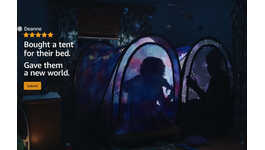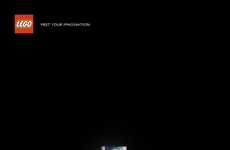
The Hospital Aleman Ads Show the Differences Between Children and Adults
Meghan Young — June 17, 2011 — Marketing
References: dcnazca.ar & ibelieveinadv
The Hospital Aleman ad campaign really nails the difference in perception between parents and their children, or adults and kids in general. Whereas we grownups see things as they actually are since we have learned and experienced their true natures, children often see things as they wish them to be.
Conceived and executed by Buenos Aires-based ad agencies Del Campo Nazca and Saatchi & Saatchi, the Hospital Aleman ad campaign is incredibly simple. Done completely in white, only the items in the thought bubbles are colored so that even without the tagline, 'Kids see differently,' we understand the context of each poster.
I especially like the minimal quality of the Hospital Aleman ad campaign because it encourages imagination in order to fill in the blanks.
Conceived and executed by Buenos Aires-based ad agencies Del Campo Nazca and Saatchi & Saatchi, the Hospital Aleman ad campaign is incredibly simple. Done completely in white, only the items in the thought bubbles are colored so that even without the tagline, 'Kids see differently,' we understand the context of each poster.
I especially like the minimal quality of the Hospital Aleman ad campaign because it encourages imagination in order to fill in the blanks.
Trend Themes
1. Child Perspective Advertising - Businesses can appeal to children through campaigns that show their perspective and perception of the world to communicate more effectively.
2. Minimalistic Advertising - Simple campaigns can be highly effective by encouraging imagination and allowing viewers to fill in the blanks.
3. Thought Bubble Advertising - Thought bubbles can effectively convey different perspectives and ideas in an advertising campaign.
Industry Implications
1. Pediatric Care - Hospitals and pediatric care facilities can use child perspective advertising to create a comfortable and reassuring environment for younger patients and their families.
2. Education - Educational organizations can create visually engaging and thought-provoking campaigns that promote learning through different perspectives and interpretations.
3. Media and Entertainment - Media and entertainment companies can use thought bubble advertising to highlight perspectives and capture the imagination of their target audiences.
3
Score
Popularity
Activity
Freshness























